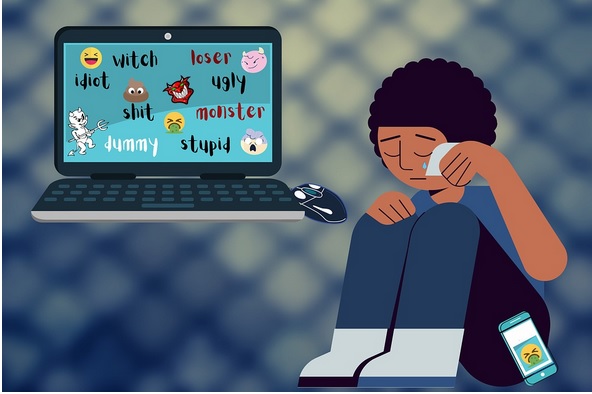
Effective strategies on how to discuss cyberbullying with your child/children to help keep them safe online. Psychological impact it can have on them if conversation is ignored or avoided.
The rapid rise of digital communication has led to an increase in cyberbullying, making it crucial for parents to discuss online safety with their children. According to a 2022 Pew Research Center study, 59% of U.S. teens report experiencing some form of cyberbullying. This article explores how to effectively communicate with children about cyberbullying, provide them with the necessary tools to stay safe online, and mitigate potential risks.
Understanding Cyberbullying
Cyberbullying is the use of digital platforms such as social media, messaging apps, and gaming forums to harass, threaten, or humiliate others. Common forms of cyberbullying include:
- Harassment: Sending repeated, offensive, or threatening messages.
- Doxxing: Publishing private information without consent.
- Exclusion: Intentionally leaving someone out of online groups or conversations.
- Impersonation: Creating fake accounts to mock or defame someone.
- Rumor Spreading: Sharing false or misleading information to damage a person’s reputation.
Cyberbullying differs from traditional bullying because it can occur anonymously and reach a wider audience, making it more challenging to combat.
Why Conversations About Cyberbullying Matter
Research indicates that open conversations between parents and children about online safety can reduce the likelihood of cyberbullying involvement. A study published in JAMA Pediatrics found that children who frequently discuss online behavior with their parents are less likely to engage in or become victims of cyberbullying. Effective communication helps:
- Build trust, ensuring children feel safe discussing online issues.
- Educate children about the consequences of cyberbullying.
- Encourage proactive steps in handling online harassment.
- Foster emotional resilience and critical thinking.
How to Approach the Conversation
1. Create a Safe and Open Environment
- Initiate discussions in a non-judgmental, supportive manner.
- Assure your child that they can share concerns without fear of punishment.
- Listen actively and validate their feelings.
2. Explain What Cyberbullying Is
- Use age-appropriate language and real-life examples.
- Discuss different types of cyberbullying and their consequences.
- Encourage children to reflect on how their online actions impact others.
3. Encourage Responsible Online Behavior
- Teach the importance of respectful communication and empathy.
- Reinforce the value of privacy settings and strong passwords.
- Guide them on identifying suspicious behavior online.
4. Recognizing the Signs of Cyberbullying
- Look for behavioral changes such as withdrawal, anxiety, or reluctance to use digital devices.
- Encourage children to speak up if they or their friends experience cyberbullying.
5. Equip Them with Coping Strategies
- Teach them to block, report, and disengage from bullies.
- Emphasize the importance of not retaliating, as it can escalate the situation.
- Encourage seeking support from trusted adults or school counselors.
6. Set Boundaries and Monitor Activity
- Establish clear guidelines for internet and social media use.
- Use parental controls while balancing trust and privacy.
- Regularly check in on their online experiences.
The Role of Schools and Law Enforcement
Schools play a crucial role in preventing and addressing cyberbullying. The National Center for Education Statistics (NCES) reports that 46% of public schools have policies in place to handle cyberbullying cases. Parents should:
- Familiarize themselves with school policies on digital harassment.
- Encourage children to report cyberbullying incidents to school officials.
- Collaborate with teachers and administrators to ensure a safe learning environment.
- Contact law enforcement if threats or harassment become severe.
Psychological Impact of Cyberbullying
Cyberbullying can lead to serious psychological effects, including:
- Anxiety and Depression: A 2021 study in Child and Adolescent Psychiatry and Mental Health found that victims of cyberbullying are more likely to develop anxiety and depressive symptoms.
- Low Self-Esteem: Persistent online harassment can lead to feelings of worthlessness.
- Academic Decline: Victims may struggle with concentration and school performance due to emotional distress.
- Suicidal Thoughts: Extreme cases of cyberbullying have been linked to increased suicidal ideation, as documented by research in the Journal of Adolescent Health.
Preventative Measures for Parents
To proactively prevent cyberbullying, parents should:
- Model positive online behavior: Demonstrate responsible internet use.
- Encourage digital literacy: Teach children how to verify information and recognize online risks.
- Create a family media plan: Set guidelines for appropriate screen time and online interactions.
- Stay informed: Keep up with the latest social media trends and potential online threats.
When to Seek Professional Help
If a child experiences severe emotional distress due to cyberbullying, professional intervention may be necessary. Signs that indicate the need for therapy or counseling include:
- Withdrawal from social activities and friendships.
- Sudden drop in academic performance.
- Drastic mood swings or increased irritability.
- Self-harm behaviors or suicidal thoughts.
Challenges ahead
Discussing cyberbullying with your child should be an ongoing conversation rather than a one-time discussion. By fostering open communication, teaching digital responsibility, and staying actively involved in their online lives, parents can create a safer digital environment for their children. With the right guidance and support, children can navigate the digital world confidently and securely.


Avoiding these narcissistic parenting styles or your children may follow similar narcissistic behaviors. Some hope in sight.

To prevent your children from adopting narcissistic behaviors, it is crucial to avoid two distinct parenting approaches. These parenting styles can have similar detrimental effects, resembling the parallel between narcissism and obesity when raising children in a toxic mental and physical environment. The end result may be different in expression, with one involving manipulative behaviors towards others and the other leading to morbid obesity, but the underlying dangers persist, yielding undesirable outcomes.
When parents have a tendency to overeat, their children are more likely to follow suit due to limited choices, as parents are the ones responsible for grocery shopping. If an abundance of unhealthy food is readily available at home, children are more likely to consume what is accessible.
Conversely, when parents exhibit narcissistic behaviors, their offspring tend to view such behavior as normal, as they witness it in their daily lives. Unlike the consistent nature of overeating leading to obesity, the narcissistic environment parents create can manifest in opposite ways while ultimately resulting in the same outcome.

Allow me to elaborate: There are two distinct parenting styles that can lead a child to develop narcissistic tendencies, and interestingly, these styles are polar opposites. One style involves neglectful parenting, which traumatizes children and impairs their self-esteem and ability to form healthy attachments with others in adulthood. The opposite style path involves overindulgent parenting, fostering a sense of entitlement and narcissism in the child’s future.
Children learn through observation. Growing up in a household where their feelings were ignored teaches them that acknowledging and respecting others’ feelings and needs is unnecessary. Conversely, children who are spoiled and told that everything they do and feel is valid develop an inflated sense of self-worth. Both environments reinforce self-centeredness, where the child learns that others’ feelings are less important than their own, leading to poor emotional regulation skills.
The good news is that children can unlearn toxic behaviors more easily than adults. If you notice your child developing antagonistic traits, you can help by demonstrating good emotional regulation and mirroring their emotions. By validating their feelings, you can reduce shame, fear, and insecurity, which can drive narcissistic behaviors. Additionally, if your child throws a tantrum, you can guide them by asking three questions: “What happened?” “How are you feeling?” and “How do you think your reaction is affecting others?” This approach helps them develop empathy, social awareness, and emotional regulation skills.
All challenging children from narcissistic parents had one thing in common, which most will acknowledge their behavior.

Just as with fitness and health, there are specific habits that need to be modified in order to ensure long-lasting desired results. Consistently maintaining a healthy diet and regular exercise routines are vital components for achieving positive outcomes in the life of your offsprings. When it comes to narcissistic parenting styles, it is crucial to reflect on your own approach and make necessary adjustments before the situation deteriorates. Given that changing old habits or adopting new ones may take longer than the typical 45 to 60 days, the urgency of proactive solutions becomes apparent.
It’s essential to concentrate on identifying and addressing any harmful behaviors from the past that could negatively influence your children, such as neglect and lack of attention. However, it’s also important to be aware that excessive attention and an overbearing presence can have adverse effects on children. These changes need to originate from within, so it’s imperative to start taking action now before it gets too late.
Learn More